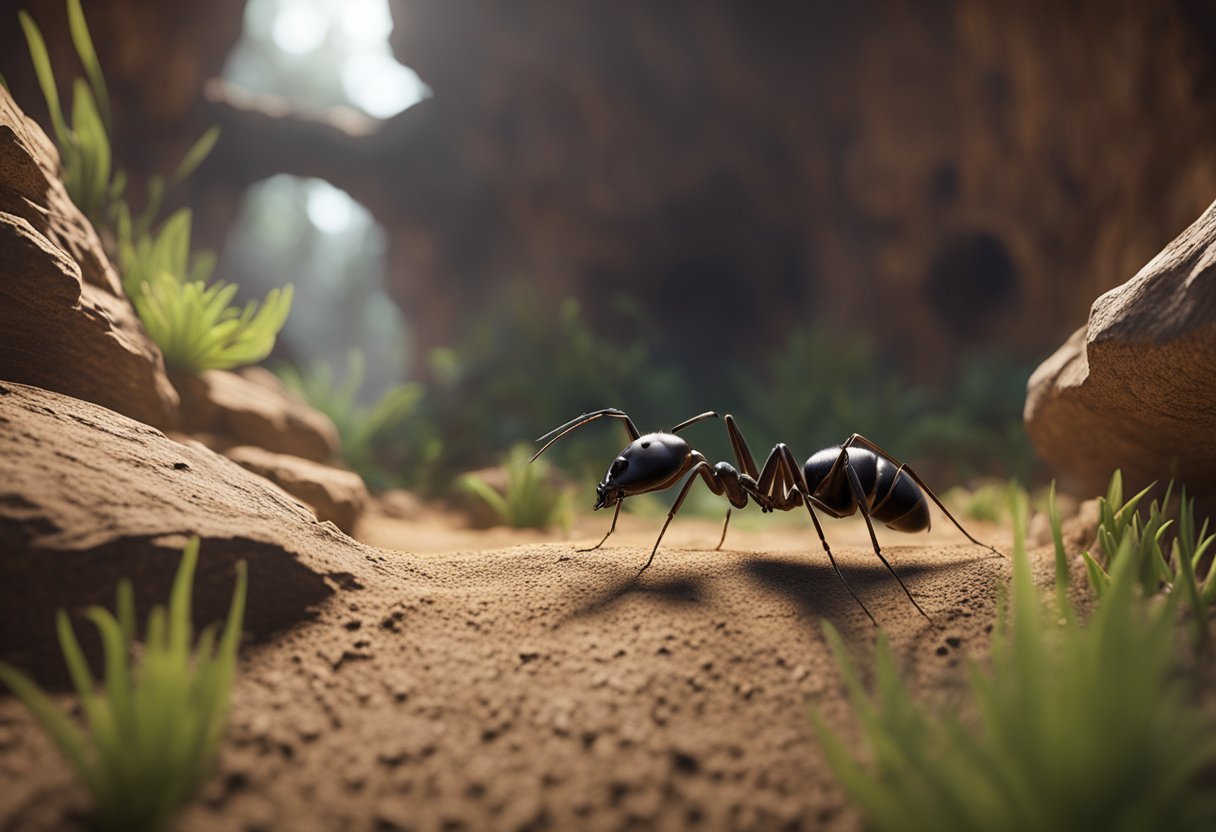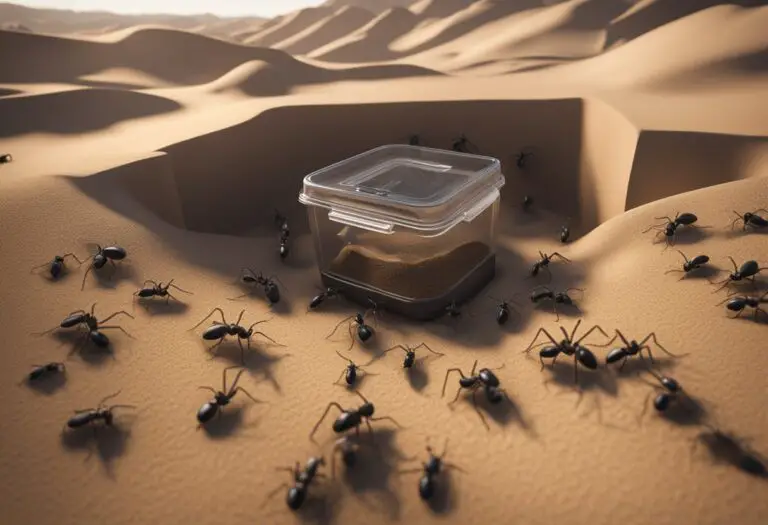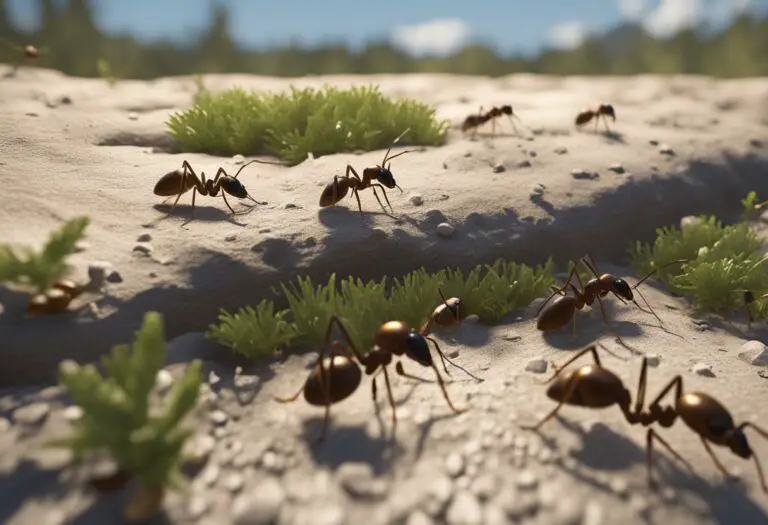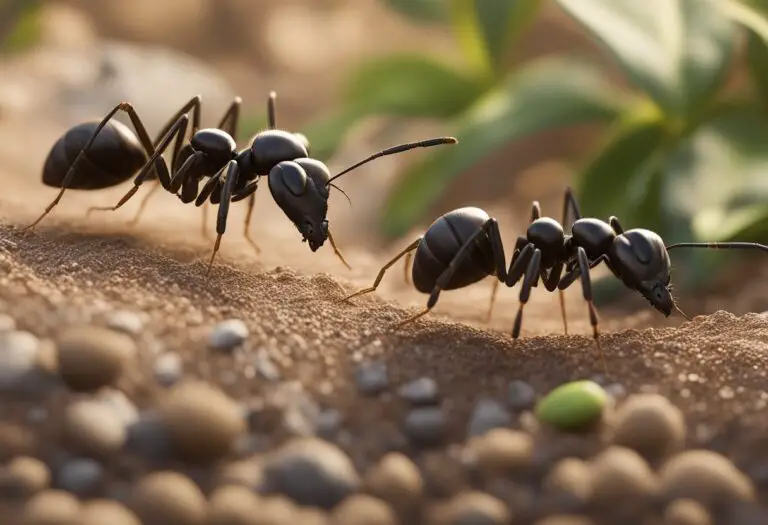Why Are Ant Habitats Important for Ecosystems?
Ants are one of the most abundant and diverse groups of insects on the planet. They can be found in almost every terrestrial habitat and play an important role in the ecosystem. Ants are known for their highly organized and complex societies, and their ability to form colonies of thousands or even millions of individuals.
Ant habitats are important for many reasons. First and foremost, ants play a critical role in maintaining the health and balance of the ecosystem. They are important decomposers, breaking down dead plant and animal matter and recycling nutrients back into the soil. Ants also help to control the populations of other insects, such as aphids and caterpillars, which can damage crops and other plants. Additionally, ants are an important food source for many other animals, including birds, reptiles, and mammals.
Ecosystem Significance

Ant habitats play a crucial role in supporting the overall health and balance of ecosystems. They contribute to the ecosystem in various ways, including biodiversity support, soil aeration and composition, and nutrient cycling.
Biodiversity Support
Ants are known to be keystone species, which means they have a significant impact on the structure and function of the ecosystem they inhabit. They play a vital role in supporting biodiversity by providing food for other organisms and acting as seed dispersers. Their burrowing activities also create microhabitats that provide shelter for other organisms.
Soil Aeration and Composition
Ants improve soil aeration and composition by creating tunnels and galleries in the soil. This allows air and water to penetrate deeper into the soil, which promotes healthy root growth and nutrient uptake in plants. Ants also mix organic matter into the soil, which enhances soil fertility and structure.
Nutrient Cycling
Ants are important in the nutrient cycling process by breaking down organic matter and returning nutrients to the soil. They also play a role in distributing nutrients throughout the ecosystem by carrying seeds and other organic matter to different areas.
In conclusion, ant habitats are essential for maintaining the health and balance of ecosystems. Their contribution to biodiversity support, soil aeration and composition, and nutrient cycling cannot be overstated. It is crucial to protect and preserve ant habitats to ensure the long-term health of our ecosystems.
Ant Habitats and Plant Interaction

Ants play a significant role in the ecosystem, and their habitats are crucial for the survival of many plant species. Ants interact with plants in various ways, including seed dispersal and plant growth facilitation.
Seed Dispersal Roles
Ants are known to disperse seeds of many plant species. They collect seeds and carry them to their nests, where they provide a suitable environment for germination. The seeds that are not eaten by the ants are left to sprout, and the new plants grow in the vicinity of the ant nest. This process is known as myrmecochory and plays a vital role in the distribution and survival of many plant species.
Plant Growth Facilitation
Ants also facilitate plant growth by providing a conducive environment for the growth of certain plant species. Ant nests provide a stable microclimate with suitable moisture and temperature conditions for plants to grow. The soil around the ant nests is also enriched with nutrients due to the decomposition of organic matter, which is brought into the nest by the ants. This nutrient-rich soil promotes plant growth and helps in the establishment of new plant species.
In conclusion, ant habitats play a crucial role in the survival and distribution of many plant species. Ants facilitate plant growth and seed dispersal, which are essential for maintaining a healthy and diverse ecosystem.
Ants as Bioindicators

Ants are important bioindicators, which means that they can be used to assess the environmental health of an ecosystem. Bioindicators are species whose presence, absence, or abundance can provide information about the condition of the environment. Ants are particularly useful bioindicators because they are found in almost every terrestrial ecosystem and are sensitive to changes in their environment.
Environmental Health Assessment
Ants can be used to assess the health of an ecosystem because they are sensitive to changes in the environment, such as changes in temperature, moisture, and soil quality. For example, some ant species are more abundant in healthy ecosystems with diverse plant and animal communities, while others are more abundant in degraded ecosystems with lower plant diversity and higher levels of disturbance.
Ants can also be used to assess the impact of human activities on the environment, such as pollution, deforestation, and urbanization. For example, some ant species are more tolerant of pollution and disturbance than others, and their presence or absence can indicate the level of environmental stress in an area.
Indicator Species for Ecological Research
Ants are also useful as indicator species for ecological research because they are abundant, diverse, and easy to sample. Ants are often used as a model system for studying the ecology and behavior of social insects, and they have been used to answer a wide range of ecological questions, such as the effects of climate change on biodiversity, the role of ants in ecosystem processes, and the evolution of social behavior.
Ants are particularly useful for studying the impact of environmental change on ecosystems because they are sensitive to both natural and human-induced disturbances. For example, changes in ant community structure can be used to assess the impact of fire, logging, and other disturbances on forest ecosystems.
In conclusion, ants are important bioindicators that can be used to assess the health of an ecosystem and to study the impact of environmental change on ecosystems. Their sensitivity to environmental changes and their abundance and diversity make them valuable tools for ecological research and conservation.
Conservation Efforts

Habitat Protection
Ant habitats are essential for the survival of many other species, making it important to protect them from destruction. There are several conservation efforts aimed at preserving ant habitats, including the creation of protected areas, such as national parks and wildlife reserves. These areas are designed to provide a safe haven for ant species and other wildlife by limiting human activities that could harm their habitats.
Additionally, many organizations work to restore damaged ant habitats through reforestation and habitat restoration projects. By planting native vegetation and restoring natural habitats, these efforts can help to create a healthy environment for ants and other species.
Species Preservation
Ants are an important part of the ecosystem, playing a crucial role in the food chain and providing essential services such as pollination and seed dispersal. However, many ant species are threatened with extinction due to habitat loss and other human activities.
To help preserve these species, conservation efforts are focused on identifying and protecting endangered ant species. This involves conducting research to better understand their habitats, behaviors, and ecological roles, as well as implementing measures to protect them from habitat destruction and other threats.
In addition, many organizations work to raise public awareness about the importance of ant conservation and the role that these insects play in maintaining a healthy ecosystem. By educating people about the benefits of ant habitats and the threats they face, these efforts can help to inspire action and promote conservation.
Human and Ant Habitats

Ant habitats are not only important for the ants themselves, but also for humans. Ants play a crucial role in many ecosystems, and their presence can have significant impacts on agricultural and urban environments.
Agricultural Impacts
Ants can have both positive and negative impacts on agriculture. Some species of ants are known to act as natural pest controllers, preying on insects that damage crops. These ants can help reduce the need for harmful pesticides and increase crop yields.
However, some ant species can also be harmful to crops. For example, fire ants can damage crops by building nests in fields and competing with plants for resources. In addition, some ants are known to protect and farm aphids, which can damage crops by feeding on plant sap.
Urban Environment Interactions
Ants are also important in urban environments. They play a role in the decomposition of organic matter, helping to break down waste and reduce odors. In addition, some species of ants can help control other pests, such as cockroaches and flies.
However, ants can also be a nuisance in urban areas. Some species, such as pavement ants, can damage infrastructure by building nests in pavement cracks and weakening the surface. In addition, ants can invade homes and buildings, causing damage and creating unsanitary conditions.
Overall, ant habitats are important for both ants and humans. By understanding the impacts of ants on agricultural and urban environments, we can better manage and protect these important ecosystems.







